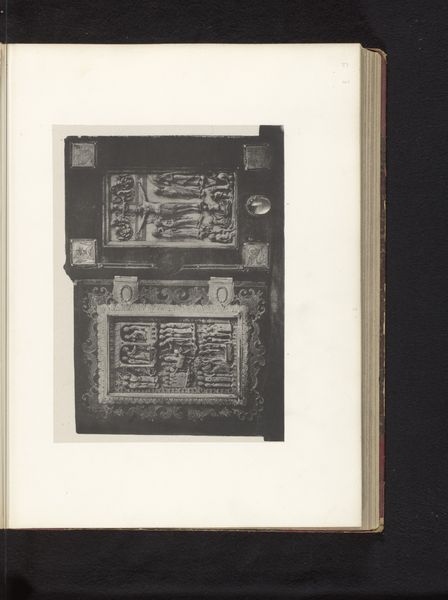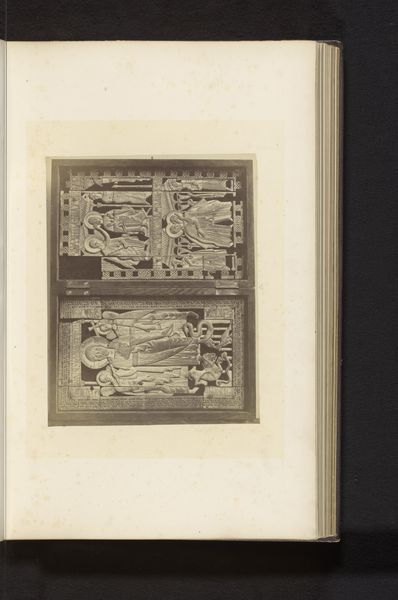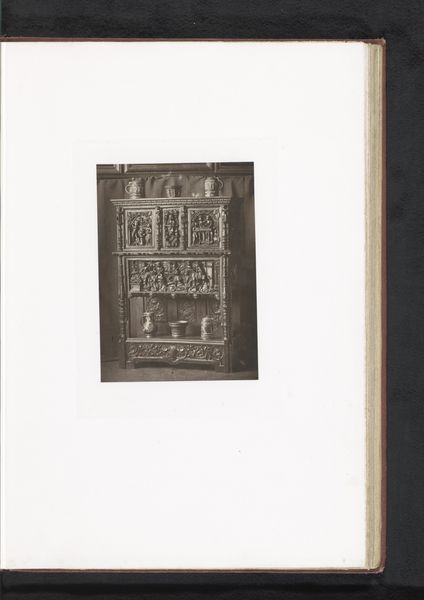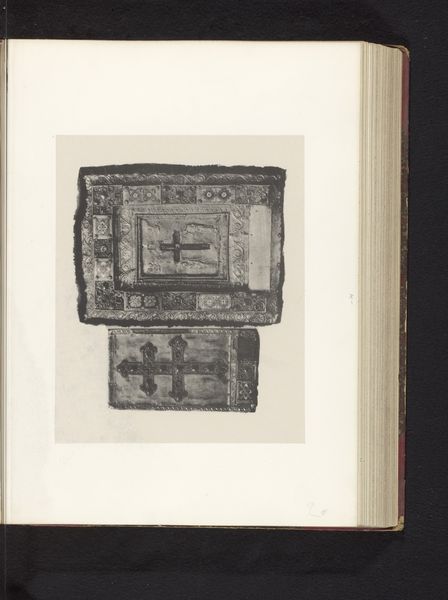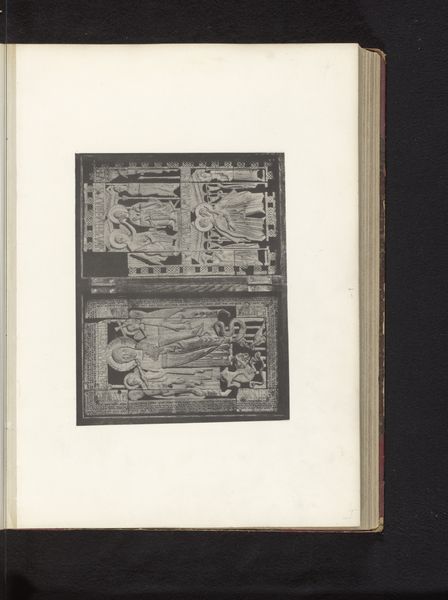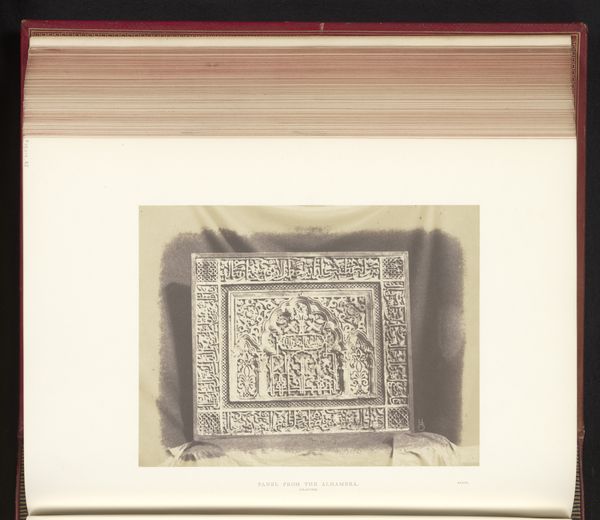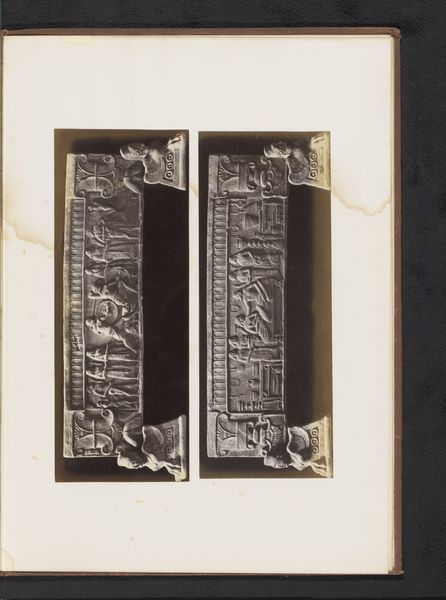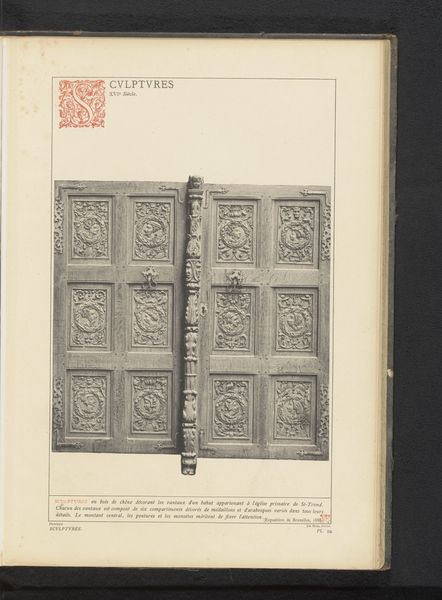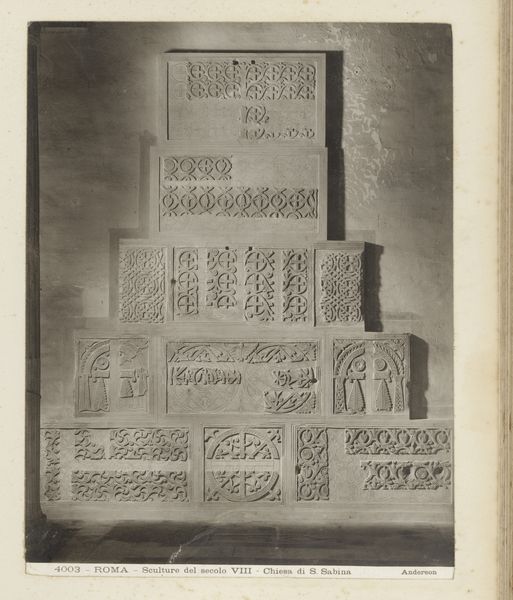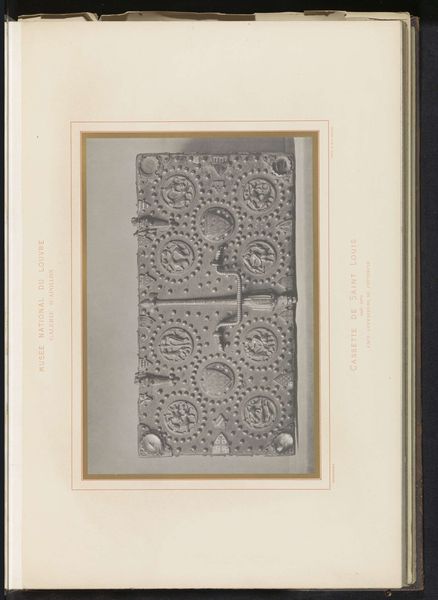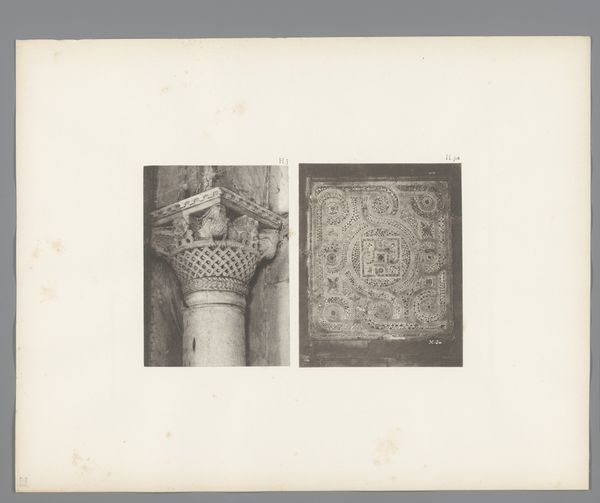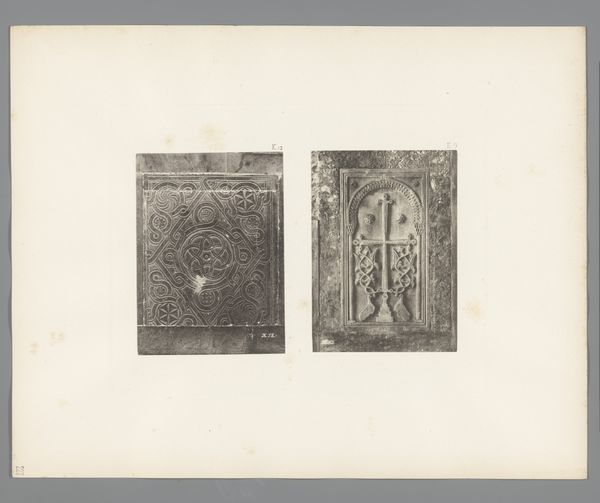
Twee reliëfs van ivoor met voorstellingen uit het Nieuwe Testament, uit de Onze-Lieve-Vrouwebasiliek in Tongeren en de Sint-Pauluskathedraal in Luik, opgesteld op een tentoonstelling over religieuze objecten uit de middeleeuwen en renaissance in 1864 in Mechelen 1864
0:00
0:00
relief, photography, gelatin-silver-print, ivory
#
medieval
#
relief
#
11_renaissance
#
photography
#
gelatin-silver-print
#
islamic-art
#
ivory
Dimensions: height 201 mm, width 259 mm
Copyright: Rijks Museum: Open Domain
Captured by Joseph Maes in 1864, this photograph portrays two ivory reliefs from the basilicas of Tongeren and Liège, echoing scenes from the New Testament. The iconography is rich with motifs passed down through centuries. Notice the recurring symbol of the cross in the upper relief, a potent emblem of sacrifice and redemption. The figure of Christ, seemingly suspended, evokes the pathos formula that artists have deployed across time to elicit empathy and contemplation from the viewer. This enduring pathos reminds me of the ancient Greek sculptures depicting dying warriors—a visual language of suffering that transcends cultures. Such gestures are not merely artistic conventions but are deeply embedded in our collective memory, resurfacing in various forms across the ages. Consider how these symbols have been reinterpreted, contested, and reimagined throughout history. They are cyclical, these returns of the repressed, shaped and reshaped by the currents of time.
Comments
No comments
Be the first to comment and join the conversation on the ultimate creative platform.
